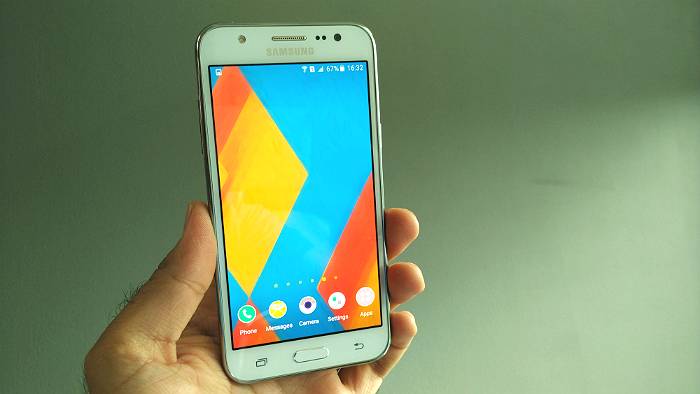TechRadar Verdict
Samsung Galaxy J5 (2015) may not be the ultimate budget smartphone, but the value it offers at 12k is simply great.
Pros
- +
Vibrant AMOLED display
- +
Expandable up-to 128GB
- +
4G with both SIMs
Cons
- -
Battery back-up could be better
- -
Slippery, old design
- -
Low internal memory
Why you can trust TechRadar
Samsung turned heads with its premium Galaxy S6 Edge and Galaxy S6 Edge Plus. The flagships are distinctively designed, have amazing cameras and brilliant displays, but, come with a hefty price tag.
However, the South Korean tech giant was somewhat losing the game in the budget category as there were no potential contenders from the smartphone maker to fight the likes of Motorola, Xiaomi and Lenovo.
Knowing the fact that the sub-15k price category is one of the hottest in the Indian market, Samsung introduced two affordable smartphones under the new Galaxy J series in this price segment.
Priced at Rs 14,999 and Rs 11,999, respectively, the Galaxy J7 (2015) and J5 (2015) feature decent specifications and will compete with the myriad of Chinese and domestic smartphones that comes at an affordable price.
We got the younger sibling - the Samsung Galaxy J5 - for review and this smartphone seems to be a value for money deal. So, let's dig deep and find out whether the smartphone is a threat to Xiaomi's and Moto G's reign or not.
Dimensions: 142.1 x 71.8 x 7.9mm
Weight: 146g
Display size: 5 inch
Display resolution: 1280x720
OS: Android Lollipop 5.1.1
CPU: Snapdragon 410
RAM: 2GB
Storage: 8GB (4.6GB usable)
Rear camera: 13MP
Front camera: 5MP
Connectivity: Wi-Fi, 3G/4G/2G, GPS, Bluetooth, microUSB
Battery: 2,600mAh
Design
The Galaxy J5 is built on the same design philosophy of Samsung's earlier flagship devices such as the Galaxy S4, S3 and a number of Duos smartphones.
The old design is not very appealing, is kind of monotonous but is quite practical. You can remove the rear panel to replace the battery unit.
Sign up for breaking news, reviews, opinion, top tech deals, and more.
It also houses two SIM card slots and one microSD card slot. The glossy plastic of the previous Galaxy devices has gone. The matte finish rear not only prevents fingerprint smudges, but feels good in hands as well.
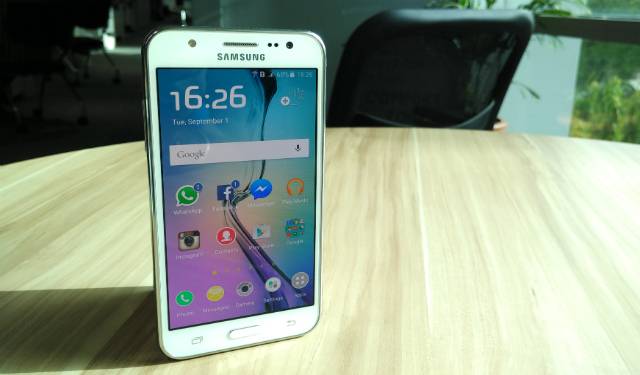
The chrome metal band runs around the edges and shines a lot, but doesn't add a premium feel; something with a subtle touch would have enhanced the overall design.
The band houses the volume rockers (placed on left side), power on/off button (place on right side) and a microphone, USB charging port and the 3.5mm headphone jack at the bottom.
The buttons are rightly positioned and the compact size of the Galaxy J5 gives it a better grip. Your thumb can reach any part of the display, making it quite comfortable to operate the device even with one hand.
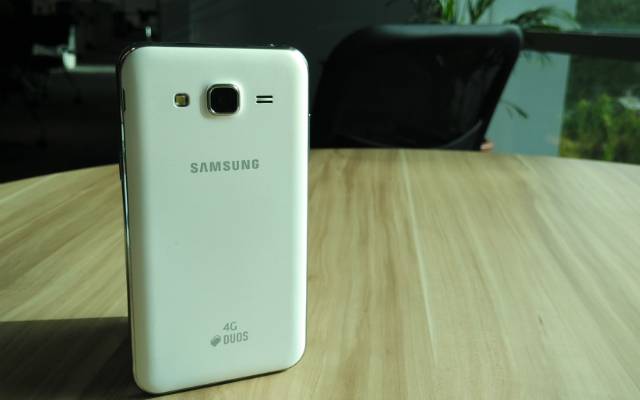
Samsung Galaxy J's closest rival is the 3 rd generation Moto G, which is definitely a better-looking smartphone and also features IPX7 rating that makes the device durable and conducive for rough-and-tough usage.
This is one of the best design selling points for Moto G which is missing on the Samsung Galaxy J5 (2015).
Display
Considering the price tag, a display with HD resolution (1280 x 720) would have been a standard thing if we were in 2014. But in 2015, full-HD is the norm and Samsung has failed to offer the bare minimum.
The South Korean company has equipped the Samsung Galaxy J5 with Super AMOLED display that delivers vivid and saturated colors than the phones available in this price bracket.
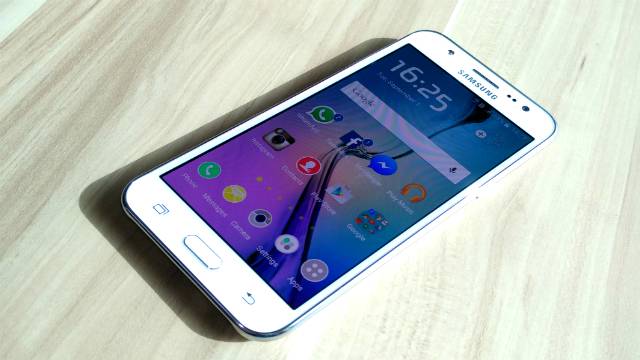
The Galaxy J5 poses no major issues on the viewing angles front, largely thanks to the use of AMOLED panels which delivers a soothing multimedia experience essential for users with taste for watching movies and playing games on their devices.
It does not feel dull and washed out like the LCD panel on the Moto G 3rd generation. The sunlight legibility is also decent as the display has adequate brightness to make content easily visible even in direct sunlight.
Performance and interface
The smartphone is powered by a 1.2GHz quad-core Snapdragon 410 CPU and 2GB RAM; same as the Asus Zenfone Laser and the Moto G (2015).
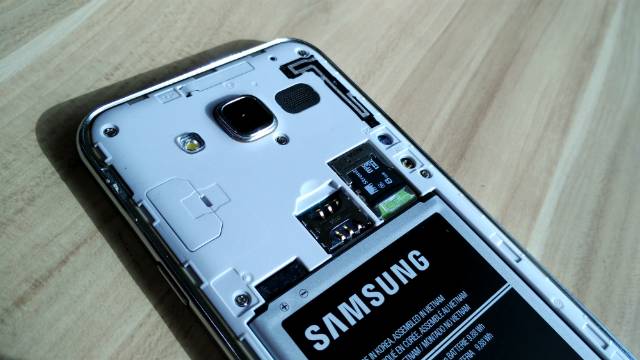
The internal 8GB storage feels a bit limited. However, microSD cards of up to 128GB can be used to further boost the storage capacity that solves the memory issues.
In terms of connectivity, the Galaxy J5 (2015) offers two SIM card slots that support 4G LTE and beyond that we're talking about conventional connectivity features like Bluetooth, Wi-Fi and GPS available on the device.
Samsung Galaxy J5 utilizes the TouchWiz UI based over Android 5.1.1 Lollipop on the software side of things. Unlike the previous versions of TouchWiz prior to Android 5.0 Lollipop, the one on the Galaxy J5 and some recently-launched Samsung smartphones feels a lot refined and fluidic in terms of design and usability.
We did not come across major responsive issues with the interface. On the whole, we were satisfied with the way things seem to have improved with the software.
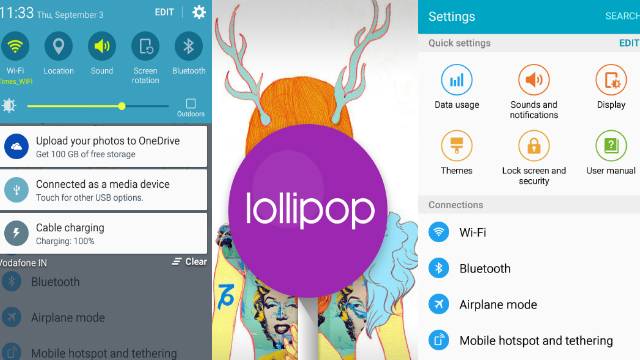
Long pressing home button opens up the Google Now and double press leads to the camera app instead of Samsung's S Voice, which is good as the voice assistant is sparely used by anyone.
Samsung has also added 'Smart Manager,' which is basically a tool to check the performance statistics of the device. You can check battery status, storage space, memory used by the apps, etc. And it also allows you to close the apps in the background, delete unused files and run antivirus checks.
Considering the fact that Chinese as well as domestic players are investing a lot on customization features, Samsung has also made its theme engine quite powerful.
All in all, we found that the software on the Galaxy J5 is snappy, feels much improved and doesn't make the smartphone feel sluggish.
The combination of Snapdragon 410 chipset and 2GB RAM is decent for a mid-level performance. You can easily churn out a good level of multitasking with ability to run all the applications in the Play Store.
We did not encounter any major issues with the performance of the smartphone in day-to-day usage.

We also ran our usual set of benchmarks and you can check the performance in the below graph.
Though the scores signifies that the Galaxy J5 is not the winner among the three but the real life performance is fairly smooth. The Moto G wins the game in all the tests and also feels a bit smoother in real life performances because of its stock Android nature.

Rohit Arora is the Senior Correspondent at Gizbot, OneIndia. He has been exploring technology since early 90s and started working with Print media in 2014. After writing for PC Quest, Voice & Data and Data Quest for over 14 months, I joined TechRadar in 2016 (Noida). Rohit provides strategic ideas to leading tech brands for new product launches and marketing campaigns.
